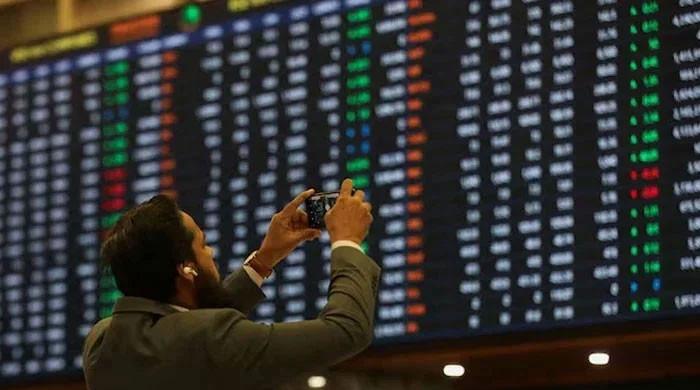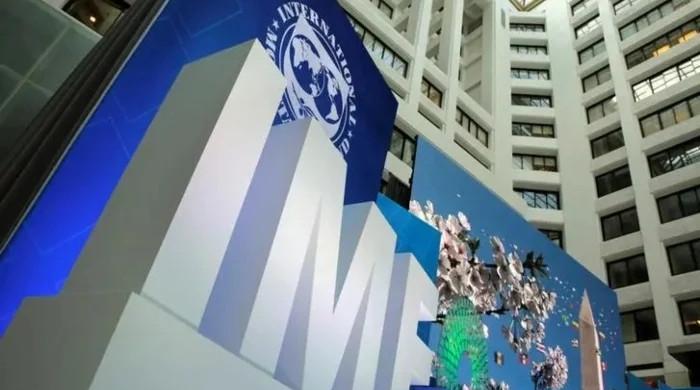Karachi’s scavengers: The faceless, nameless recycling heroes
Karachi’s garbage problem is growing daily, by heaps and mounds. The solid waste management system of Pakistan’s most populous city is nearly choked. But there is one solution: the...
November 04, 2017
Karachi’s garbage problem is growing daily, by heaps and mounds. The solid waste management system of Pakistan’s most populous city is nearly choked. But there is one solution: the need to understand and accommodate Karachi’s informal sector of recycling. In other words, further bolstering the recycling activities of individuals - scavengers or rag pickers – and micro enterprises.
The informal system of waste collection in the city, while efficient and hierarchical is also highly oppressive and hazardous.
According to a 2012 World Bank study, Pakistan generates an estimated 50,438 tons of garbage per day, which is approximately 18.4 million tons per year. At the moment, the average per capita waste generation rate is 0.84 kg per day, which is projected to grow to 1.05 kg per capita per day by the year 2025. Therefore, in the future, 109,244 tons of solid waste per day could make its way to the city streets. Now compare that with some of the other countries in the table below.
In 2002, a research study by the Karachi-based Urban Resource Centre estimated Karachi to be generating 6,600 tons of waste per day. Since then, the trash has kept piling on, further straining the disposal system. Now, the city’s polluting heaps have doubled to 12,000 tons per day. Therefore, Karachi is producing 24 percent of Pakistan’s total waste per year.
If that isn’t staggering enough, most of the trash does not even make it to the two largest landfill sites: Surjani Town’s Jam Chakhro and the Deh Gondal Pass, near the Northern Bypass. Both are not proper landfill sites either, but rather just dump yards, as landfill sites should be properly lined to avoid leachate from seeping through. Also, both are approximately 20 km away from the centre of the city. Which means that practically, a garbage truck can only make two trips in a day.
At the landfill sites, the mountains of muck are an environmental hazard for the people living close by and for the scavengers forced to rummage through it.
Back in 2002, Karachi’s 6,600 tons of waste was sorted and recycled by the city’s Rs. 2 billion per annum recycling industry. With time, old mobile phones, computer accessories, and other electronic items have been added to the trash. Today, the recycling industry must be valued at Rs. 4 billion per annum. But the number of people it employs is unclear. Now, compare that to Delhi, with a population of 25 million. The Indian city has upward to 25,000 workers employed at scrap-yards, where 10,000 to 20,000 tons of e-waste is handled every year, with computers accounting for 25 percent.
Once generated, trash in Karachi goes through various stages of recycling, at home and outside, before ending up at a landfill. The following is a table that shows the various handlers of municipal waste:
Scavengers enter the recycling system at the start of the cycle, usually at commercial markets, neighbourhoods and the informal and formal Katchra Kundis (garbage dumping points), and then again when the trash is taken to the landfills, in turn completing the cycle of sorting and segregation. These men, women and children, can make up to Rs.250 per day.
Cities from Bangladesh, India and Pakistan are often ranked as the world’s ten most polluted. The total waste collection rate in the major cities of Bangladesh such as Dhaka is only 37 percent. While the rest, 63 percent is illegally dumped. While Delhi, which is projected to generate 15,000 tons of municipal waste per day by 2021, is already deliberating on converting 28 square kilometre of land for disposing – an area as large as three New York Metropolitans.
As for Karachi, there is little such data and estimates available for future planning. By some accounts, around 100,000 scavengers collect glass, bones, plastic bottles and bags, paper and iron. The separated items are then sold to contractors who segregate the waste and transported it to the relevant recycling industry. And since these trucks are usually overflowing with materials, bribes have to be paid to police officers to ease the journey.
Another worrisome trend in the city is that when a land mafia wants to re claim an area it dumps construction waste there. Trucks carrying construction and other municipal waste carelessly toss them into mangrove forests. An example of this is the Machar Colony. A truck of full of construction waste costs Rs.1,200 in Machar Colony to reclaim the land from sea, for the subsequent sale of plots to the potential buyers.
Even though perilous, had the informal sorting and recycling sector not been operating in Karachi, the city would have drowned in its own waste.
Unless the planners of the city do not formally recognize and accommodate the role and method of the scavengers, no technical solution and investment is going to work. Recycling needs to be facilitated and shifted to landfill sites. It also needs to be facilitated by the provincial government by acquiring land, water, electricity and a proper wastewater disposal system.
= Mansoor Raza is a freelance researcher and a peripatetic with a special interest in demographic and societal changes in Pakistan. He can be reached at [email protected].
Note: The views expressed are those of the author and do not necessarily reflect the official policy or position of Geo News, The News or the Jang Group. The data presented by the author has not been independently verified by Geo.tv









